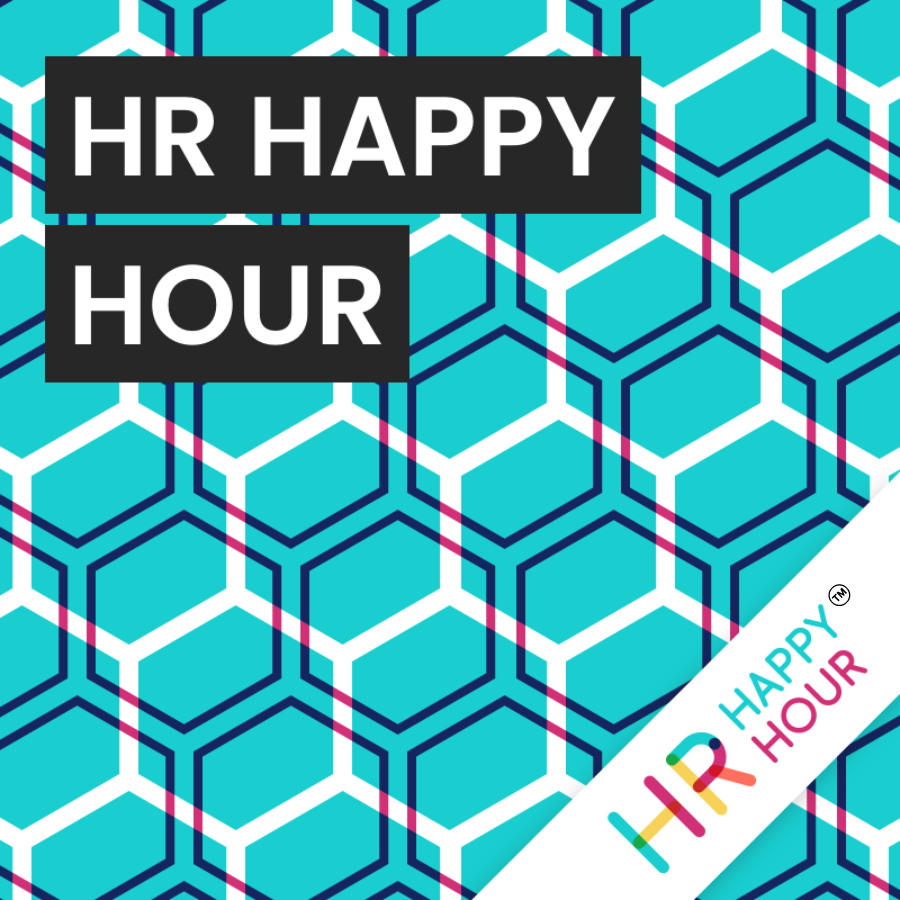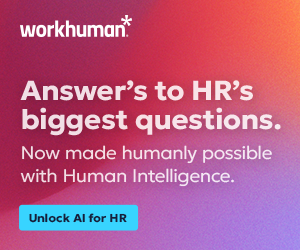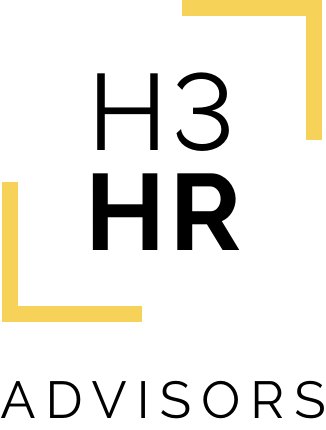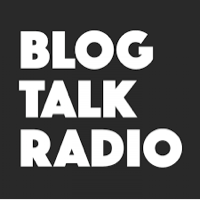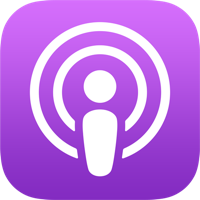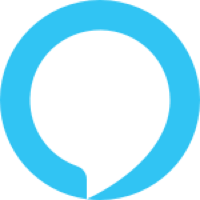Using AI and Skills Technology to Empower Business Leaders
Hosted by

Steve Boese
Co-Founder and Chief Data Officer of H3 HR Advisors and Program Chair, HR Technology Conference
About this episode
Using AI and Skills Technology to Empower Business Leaders
Host: Steve Boese
Guest: Yvette Cameron, Senior Vice President, Global Product Strategy, Oracle Cloud HCM
Today, we have Yvette Cameron on the show to discuss the current state of AI in HR, emphasizing the need for bold adoption and rapid integration into enterprise software.
– AI adoption in HR, governance concerns, and innovation
– Importance of dynamic skills capabilities for business leaders
– Investing in AI-powered tools for defining strategic roles and skills
– Arming business leaders with tools and guidance to manage agility in an organization
To learn more about Oracle Cloud HCM, please visit: oracle.com/human-capital-management
See the Oracle Grow for Business Leaders press release here
Thank you for joining the show today! Remember to subscribe wherever you get your podcasts!
Transcript follows:
Steve 0:32
Welcome to the HR Happy Hour Show. My name is Steve Boese. I’m excited to be here today. Trish is not with us today, she is still traveling, making her way back from HR Tech Europe. But I’m here and I’m very excited for the show today. Because for me, and where I sit in HR and HR tech, probably the two biggest topics of the year, and probably for many years to come, at least this year, our AI Artificial Intelligence, of course, and skills, learning developing skills, learning skills, assessing skills, hiring based on skills, the skills conversation is everywhere in HR, and is as is the AI conversation, and we’re going to talk about them both. And we’re also going to talk about some new technology kind of sitting in that that nexus of AI and skills. And we’re joined by friend of the show frequent guests and back again, today is Yvette Cameron. She is the Senior Vice President of Global HCM product strategy at Oracle. Great to see you and welcome back to the HR Happy Hour Show.
Yvette Cameron 1:37
Thank you, Steve, I’m always excited to have this conversation with you. Thanks for the for the opportunity.
Steve 1:42
It’s great to have you. It’s great to have you in what is a very busy time of the year for folks in the HR business in the HR tech business, with events everywhere. And we’ll talk a little bit about the unleash event that’s happening really right now as the show post. But it’s good to see you and thank you for taking a little bit of time with us. You know, before we get into some of the details of the announcement, the news capabilities in Oracle Grow, the announcement we want to talk about some is, boy, we’ve been AI to death now for about a year and a half or so maybe an HR event. But where are we at with AI? Like what are customers telling you? Oracle’s got a great point of view around AI we let’s talk a little bit about just AI in HR in general, before we dive into a little bit about what’s happening with the products.
Steve 1:42
I want to challenge you, Steve, do you think we’ve been AI to death? Or have we been AI hyped to death?
Steve 2:39
Yeah, maybe both? Right, exactly.
Yvette Cameron 2:42
I tell you, I, you know, I am amazed at how quickly this market is moving. I know that when chat GPT came out, what was it November of 22. Right. But nine months, you know, even our own organization was actually shipping product. And you know, I think we had our first eight or nine use cases, cases shipping within nine months. And a lot of vendors talking about it. There’s a lot of AI out there, of course, but the generative AI piece is just, you know, phenomenal. And it’s really causing people to rethink. Where are we? We are definitely high high in the hype cycle. Right. And we have a I’m seeing a lot of fear and concern. Are we ready to move forward? Do we need to put a governance council in place etc. And I’ve got to tell you, I feel really strongly Steve that, that HR leaders or CHROs actually have to take a really bold step. I think that the first mistake is asking for governance councils, that means clamp down how do we slow this down? How do we put the brakes on until we checked every single box and everything’s going to be perfect? Things are not going to be perfect for a while right? We’re still learning the we’re learning how to get rid of all the the hallucinations and AI all the tech vendors etc. And I can guarantee you that for every CHRO that’s sitting there saying well, we’re gonna wait. We’re putting our council in place we were thinking about next year across their organization and you tell them if you think I’m wrong, but I think across their organization, AI and Gen AI is being used every day managers are popping job descriptions into some free, you know, a chat GPT type capability and certainly, you know, candidates are using AI to write the resumes, etc. The longer you wait as a leader, the more risk you’re introducing to your organization. That’s kind of our point of view. We’ve got to move fast, right? We’re all going to think big about what’s possible. But I think we need to start small move fast. It’s kind of our mantra and a lot of the AI related technologies nowadays.
Steve 4:54
Yvette, I do agree with you right, because when you talked about the the tendency for wanting to create some governance around this or implies centralization and a little bit of control. And what I was thinking, just as you said it the same way you that was people are out there using these tools already, right? Because they’ve adopted them or experimented with them, you know, because they’re free, many of them are free to use just go out on the web and use chat GPT or Claude a, I was playing with our co pilot. And it’s interesting, because, you know, this, we’ve seen this happen in other types of enterprise technology, whether it was collaboration tools, or chat tools, or even mobile phones, for gosh sakes, right, or tablets, even right, people started adopting them in their personal lives, and then wanted to use them right in their professional capacities, and started to look to their organizations first. And then organizations look to their providers, right to make these capabilities available to them in a way that they want to use. So I agree with you.
Yvette Cameron 5:56
Well, I don’t want to give the message that governance is bad. I’m suggesting to see HR leaders, why don’t you call it an AI Innovation Council? Right? That kind of implies we’re here we’re looking to embrace How do we do so safely? And then, of course, as vendors, we’re talking about how to we help bring safety to the industry through prompt engineering through, you know, not exposing customer data, etc, etc. But you’re right. I mean, it is in what I said, people are using it, I’ll tell you, I was talking with our I had an opportunity to talk with a customer in France. And I wanted to get my message across, but they’re there. They’re, of course, they speak English as well. But I wanted to show that I was really in tune with them. And I used a free AI tool to take my my little five minute presentation and convert it to my speaking French. The eyes were looking and the lips were appropriate for the language. And it sounded good. I assume it was accurate. But I didn’t use it because it wasn’t totally sure. But if my company had brought it forward, then I would have used it. So I mean, I’m a pure example. Right? Even I didn’t do it, but I was close to use using it myself. So there you go.
Steve 7:14
That’s a great example. And a great kind of, there’s so many really interesting and innovative ways to apply these capabilities in both in the enterprise and without, but yeah, just not embracing them not being fearful of them and trying to find those find those use cases that make the most sense for your organization. I Oracle’s approach specifically, I remember last year, we were at Cloud world, I think, and you know, doing the the HCM kind of point POV around. And this is what we’re doing. We’re doing a thoughtfully, we’re thinking about the way these tools work best there, you know, whether it’s authoring or summarization, or doing recommendations around data, right, and nudges and things like that. And it’s, it’s very, very coherent approach.
Yvette Cameron 8:03
Thank you. And it’s a start, I, again, we’re just at the tip of this iceberg. There’s a lot of hype and people talking about all the different things we can do. And truthfully, I do believe that Gen AI is going to completely change the way we interact with software completely change. And in, you know, our philosophy that we’ve started just recently talking about it, you know, for years, it was mobile first. And now I think we’re looking at Gen AI first, right? What does that experience like, when you design the interactions for Gen AI, and that’s what our new Redwood user experience is enabling these new interaction patterns. So it’s very natural process for us to move forward. But if people are afraid of assisted authoring with Gen AI, imagine when there’s no transaction or imagine when it’s doing analysis for you and making recommendations and in all new ways, right. And, and reading policies and giving you guidance based on the policies of the organization’s trusted, etc. We’re just at the tip of the iceberg. And I don’t even think that we have fully imagined what’s possible in enterprise software in the next five years. It’s going to be amazing.
Steve 9:20
Yeah, some some would say it’s probably the biggest sort of leap forward in enterprise tack. Since I guess the cloud right would have been the last big sort of paradigm shift. Right? Mobile to some extent, too. But I think this may even be bigger than mobile, as you suggest, right? Indeed. So we we’ve talked a few minutes about AI and I started the show saying the two things right, that are sort of dominating the the discourse in HR these days are AI cores and skills, right? I mentioned skills, and I’d love to talk a little bit about skills because, again, this kind of feeds into this pretty significant product announcement we want to talk about as well. So many organizations are wrestling with skills, right in terms of, let’s figure out how we identify which skills the employees might have, which skills the organization needs, what skills might we be able to develop fairly easily based on those skills and on and on and on this boy, that one single word skills, if it weren’t for AI, skills would be it, right? It’s all we’d be talking about. But it’s important, and I don’t mean to be flippant about it. So many organizations are thinking about skills and skills based approaches to many of the talent management functions. Oracle spent a lot of time on this and built a lot of skills capabilities and other products, I’m sure you’ve got some things to say about how organizations are maybe shifting a little bit how they’re approaching some of these talent management functions.
Yvette Cameron 10:49
As you well know, we introduced a concept several years ago, I think about three years ago, maybe four, called Dynamic Skills. And that is now available to 100% of our customers, right? In Cloud HCM. Everybody has access to this AI driven engine that will, you know, connect skills and adjacencies, etc, to the various processes. But even with that, even with that, organizations still struggle with, yeah, but you know, we’re not really sure how to start. And it’s we’re having a hard time understanding, you’re even thinking about where the skills are in the organization, what do we really need. And, you know, part of the challenge here, Steve, is that HR doesn’t always really know the business of the business. Right? As HR leaders and as Chief Learning officers, we set the skills that we think are needed for the jobs that we’re posting, we set the learning curriculum for, for those jobs, right, here are the things that you need to learn. And here’s the certifications you need to have. But nobody really knows the business like the business leader. I for it, I’ll tell you is one example. In my organization, the skills that I need in my product strategy organization are different from the skills that that another product strategy team needs, because there’s different levels of maturity in the line of business, we’re organized differently up to our executive VP. So I might have a focus in one area moreso than another, etc. Only I really know, you know, what’s needed. In fact, I have reading and some some analysts and different documents that I want my team to need to read and follow that our head of talent development or head of HR has no idea about. So it’s, I think, has been one of the fundamental gaps in really executing on a skills strategy. It can’t be fully HR. You know, HR lead, you need to give the business the tools that they need to take ownership of driving the skills that they need in their team. And so that’s what our new product announcement is all about.
Yvette Cameron 13:13
As I mentioned, several years ago, we introduced Dynamics Skills. Last year, we introduced Oracle Grow, which was focused on the employee’s success in the organization, either self directed success or guided by, you know, their wanting to look to growing their careers, and we brought an AI, essentially, we call it the AI, kind of a personal career coach to the employee. But now this year, we focused entirely on the needs of that business leader, HR HR delivers, the tools, we call it grow for business leaders, HR makes those tools available, they set some of the original parameters on here, some things you can learn, etc, etc. But ultimately, the individual business leader has the ability to create those strategic roles, and the skills and qualifications, those those levels of skills that they need, and also assign the resources that they know we’re going to best fit their organization. And by putting this power into the hands of business leaders, it really lets them set the stage for how they’re going to take ownership and drive the success of their teams. So this is grow for business leader. This is the announcement that we’re making this week, Adam Leach, and lots of great capabilities. But the bottom line is I like to call it business lead HR, architected HR makes the capabilities available by deploying grow out to the organization and the business leaders have those tools. And so they’re creating strategic roles. They’re identifying those skills. Of course, they have a full view into analytics and how people are progressing and you know, there’s great transparency for the employee because for the first time they can Really see not just recommended, you know, skills and jobs and various things, but they can see specifically how their role and what’s critical by as as conceived by their manager for their role, and make sure that their investments are really meeting and aligned with the needs of their managers. So we’re very excited. There’s a lot of aspects. But you probably have a question for me right there. So let me stop.
Steve 15:27
I like where you’re going with this. And I like what the team has done here, because you’re kind of bridging that gap between really powerful HR capabilities, but then empowering leaders to really make those decisions and help really organize, manage and lead their teams and help develop their people. Because as you, as you said, very, I think quite rightly, and importantly, that development piece for people and for and for teams and developing those capabilities. And what capabilities are needed are often if not, maybe always, right, best understood by those line managers and those business leaders, right? Not necessarily the HR team, you made a great example, in your own team, you’re a product strategy, organization, but there are, there’s probably another product strategy organization over at Oracle, say in charge of finance, RP, or finance. Exactly. And their the maturity of those products is in different place, their market penetration is in a different place, their competition is different, there’s a lot of things that are a little bit different write about those two roles. And so what you and your team really need to do and need to focus on developer is going to be a little bit different, right then that those other teams, and you as a business leader, need those tools to both visualize it, to see it, understand it, and then try to help employees close any gaps. Right that needs. Yeah, exactly. Exactly. Yeah. I love that. I love the focus here.
Yvette Cameron 16:54
Yeah, thank you. And I will tell you that this, this investment actually came directly out of our many, many, many customer engagements through our customer advisory board through talking with so many organizations over the last probably year and a half. And seeing that despite the focus on helping employees drive them drive themselves for learning, etc. And all of the great advances across learning systems. Ultimately, managers were missing that tool. Now, we’re talking about developing skills, skills associated with the strategic role and, and the resources that are necessary. So of course, with skills comes AI, you cannot spell skills within AI. And, and so of course, inherent in this solution, are things such as helping the manager, that business leader define that strategic role by you know, surfacing up skills, we use generative AI to help them offer author, the the definition of their roles in what’s needed, etc. We’re making nudges and doing analytics, right, using AI powered tools. But I think the biggest the biggest impact, from a skills perspective, is that now with these investments that we’ve made to really enable the business leader, it became clear, Steve, that many organizations have been trying to use skills in their organization, or they they bought a library or competency library a while ago, or they’ve got a recruiting solution where they’re able to, you know, track and get some skills and talent, intelligence, maybe they’ve got a talent marketplace, or they’re using a learning system, or hours, where there is skills associated. But the challenge with these, with with many of these approaches is that they’re disconnected. And how how does a business leader really get their arms around the skills when they’re located in a recruiting system, a learning system, a talent, marketplace, etc. So what we’ve also done as part of this announcement, is we have opened up our dynamic skills platform. And now it is a skills aggregation platform. So no matter where you’re starting, no matter if you have no skills data in your HCM system, whether you have, you know, you’ve already got your own library, or you’re using one, two or three or four different skills solutions out in the marketplace, we will ingest all of that we will take that into our dynamic skills platform. If you want to use AI because I know that many organizations are still not there. If you want to use it, we can enrich it. Of course if you don’t want to you can manage it yourself. We’ve got a very robust content curation console for HR. And of course we pre deliver all the plumbing into your payroll in your succession in your recruiting, learning, etc. So for the First time now organizations don’t have to say, you know is do I, can I only use Oracle? Or do I have to make a choice over here with this third party and then integrate it, keep doing what you’re doing start wherever you are, we’ve got the tools to enrich and take you forward. And this is where I think it’s, it’s going to be really impactful in our conversations this week, because so many organizations are struggling with, Oh, we’ve got these other things we’re doing or we’re not ready for AI, wherever you are, and your skill strategy, which of course includes Are you ready for AI or not? We’re there to help. So huge news for us. I’m very excited about being an open aggregation skills platform now.
Steve 20:40
Yeah, that’s that’s like not to be overlooked in this announcement, right, we exactly talk about developing a leadership driven approach to skills management and leaders by having visibility to the skills of their team and the skills that they need. This, this opening up the platform and allowing organizations to bring in data from other systems that they might be using is important as well.
Yvette Cameron 21:04
Can I tell you, there’s one thing that I want to make sure we don’t overlook? You know, when you started asking the question, you said, Ah, skills is for everything. It’s for learning and recruiting, etc. And I just echoed that. But one of the one of the, you know, another kind of exciting piece, I think, for me from these investments in this grow for business leaders, is imagine, as different business leaders across the organization are saying, Wait, here’s my strategic roles, here are the skills and the proficiency levels I need for these roles that right now are strategic, and I might redefine some additional ones in three weeks or three months. And here are the resources that I want beyond just the learning that’s in our catalog. You know, I want my team to be following this blog and following this analysts and looking at these links, etc, etc, talking with these coaches and mentors. Now, from an analytics perspective, HR can step back and watch the rise in the growth of these of these strategic role guides that business leaders are creating, they can see the skills that are being requested. So they are getting the demand and vision into this demand for skills, they’re able to see how individual development is aligning to those requirements. So they can see the growth and the availability, the resource, they can also see what are the resources, the development resources that are in demand across the organization. So maybe, you know, they’re well, they’re having visibility now into documents and mentors and various things that they didn’t envision when they set up their learning programs when they budgeted development resources. So again, by putting power in the hands of business leaders and listening to their needs, HR suddenly has an insight into the supply into the demand, not just a talent, but into how the job architecture needs to be structured. These are the strategic roles. These are the skills that should inform HR and how to redefine those positions and roles. And it should also define how they should be investing in their workforce. So for me, this is a transformational investment. It’s not just about developing people, it’s not just about putting hands power into the hands of leaders, it’s also about really having a bottom up, you know, from the business level driving the requirements of the skills and the resources across the organization back to HR so that they can make the right decisions on investments. I’m super excited about what’s going to happen here.
Steve 23:43
Yeah, you bet. Thank you. And I appreciate your enthusiasm for this because it’s right in, in a world where we are wrestling with still many organizations wrestling with talent shortages, skills, requirements, skills, gaps, right, those things really haven’t gone away in many organizations, equipping leaders and organizations with tools to help them make those connections between the most important roles that they have in the organization and aligning the people in the organization to to not just to meet roles but meet the requirements but also to kind of develop themselves right and reach their goals. Right. There’s a whole another side of this that’s endemic to Oracle grow and the whole Oracle really the meek employee experience platform, which is really all about employees as well, right? helping them learn develop, meet their goals and really be fulfilled, right while they’re doing it. And that’s a huge element of this too.
Yvette Cameron 24:43
Yeah, thank you Oracle Grow. Did it was it was released as part of the Oracle platform. As I said, the focus was on the employee and now it’s branched out and you know, you’re hearing my passion because as I said, this came from talking with organizations. This isn’t something we created it just, you know, out of our heads in the IDEA Lab, we saw the feedback, we heard the challenges. People weren’t asking for Oracle grow for business leaders, they were asking, how can we better arm our managers in this really tough time where things are changing. And they know the the needs, you know, we’re putting requirements on managers, and, you know, they have to figure out how to solve the problem. I know that, you know, we all know technology is a leapfrog thing, I’m sure in another, you know, two to four years, we’re gonna see many more vendors doing what we’re doing today, and we’ll be in some other place is where, you know, meeting the needs of business. And, and I just, I think that for the first time, this this HR architected business led this concept that HR can’t, it really can’t be responsible for knowing everything about the business, what it can be responsible for, is arming the business with the tools and the guidance to be successful. And that’s how else can you manage agility in an organization, right, so this, you have to use the power of many, and your business leaders. So again, it’s a very fulfilling investment for us. I love how our customers have really come forward and been co developers and just really, really driving the capabilities that they need as businesses.
Steve 26:30
You bet. That’s a great way to sum it up. And it’s one of the things we’ve heard consistently from the Oracle Team over the last, I don’t know, half a dozen years is just how much innovation and new development comes from that customer community. It’s very active one, it’s very involved one and it’s one that you guys listen to Chris Leone talks about it all the time. And I it’s it’s apparent in how you guys have been innovating. So. So yeah, to sum up quickly, the new release the new announcement, Oracle Grove for business leaders that you can will link out to the announcements today, you’ve added some of the other folks, the Oracle Team are out on leash as we speak as you listen to this show. So come see them there as well. And maybe check out what’s happening there. And we’ll put some links to the product announcement as well. As well as the press release in the show notes too. But super exciting event to see you thank you for taking a few minutes out of an incredibly busy month of May, here to spend with us and to share the good news and share your enthusiasm about what’s happening in Oracle. We share it as well. We’ve loved working with the team over there over many years and continue to innovate. And I’m looking forward to seeing a demo as we start making our you know, top products of the Year awards decision soon. So you there already. Thank you so much. It’s great to see you.
Yvette Cameron 27:53
Thank you, Steve, you take care.
Steve 27:56
Thanks for listening. Thanks to our friends at Oracle for setting this up and helping us spread the word about what’s happening there with Oracle Grow for business leaders. Truly check it out so much innovation happening in Oracle, multiple Product of the Year Award winners over the last several years and it’s not surprising, given their commitment to their customers as well. So alright, that’s it for today’s show. My name is Steve Boese. Thank you for listening to all the archives at HRHappyHour.net. We will see you next time and bye for now.
Transcribed by https://otter.ai
Talk to us
If you want to know more about any aspect of HR Happy Hour Media Network, or if you want to find out more about a show topic, then get in touch.

